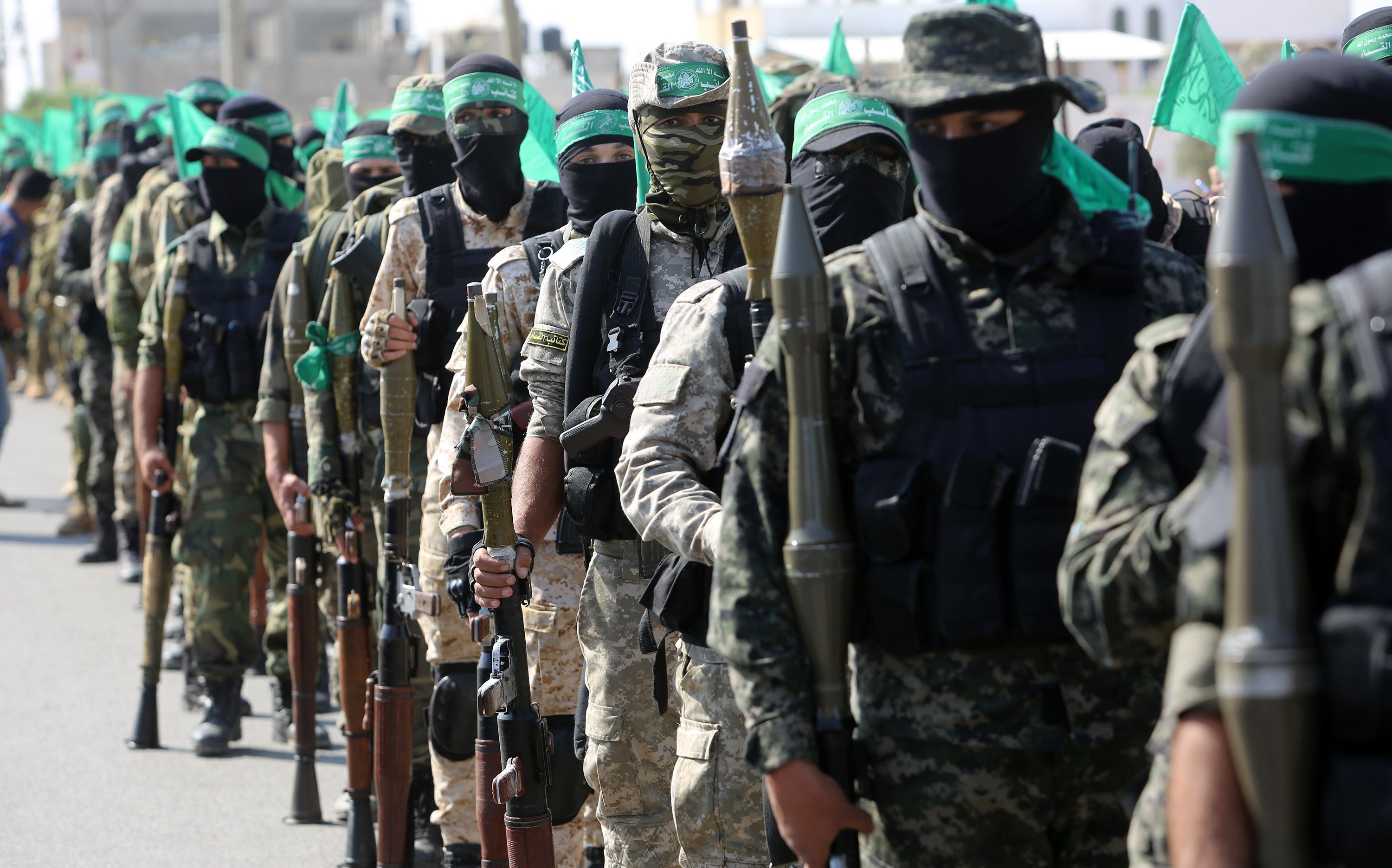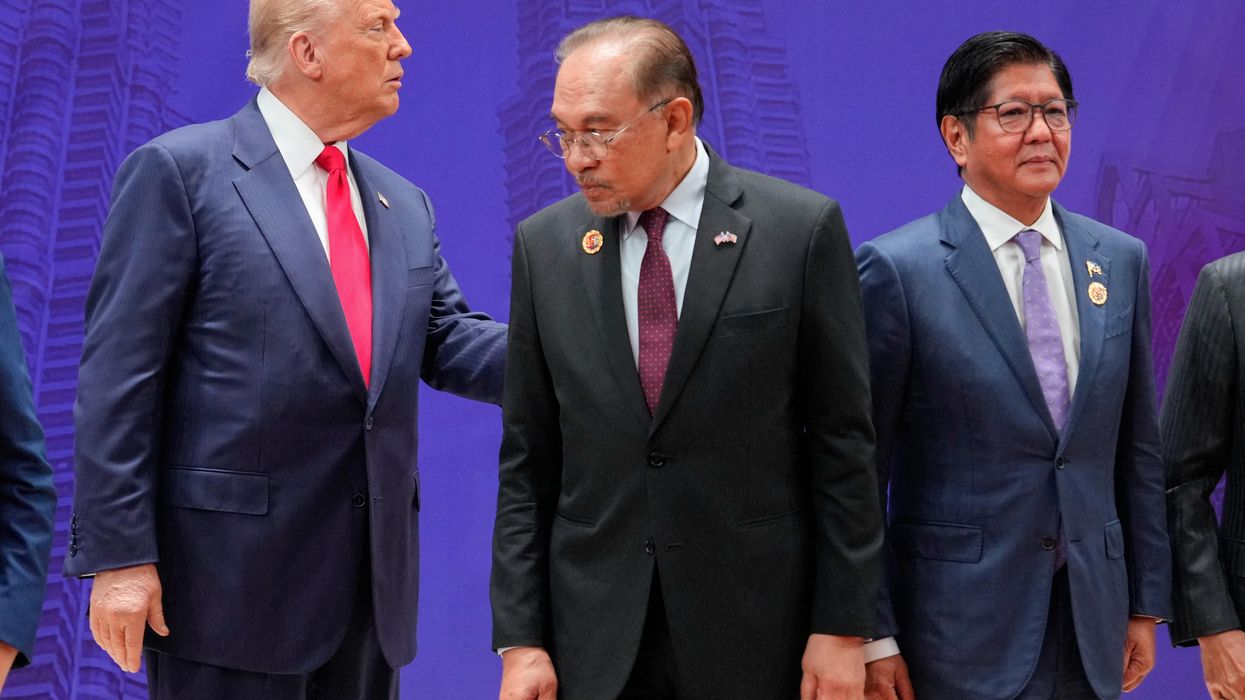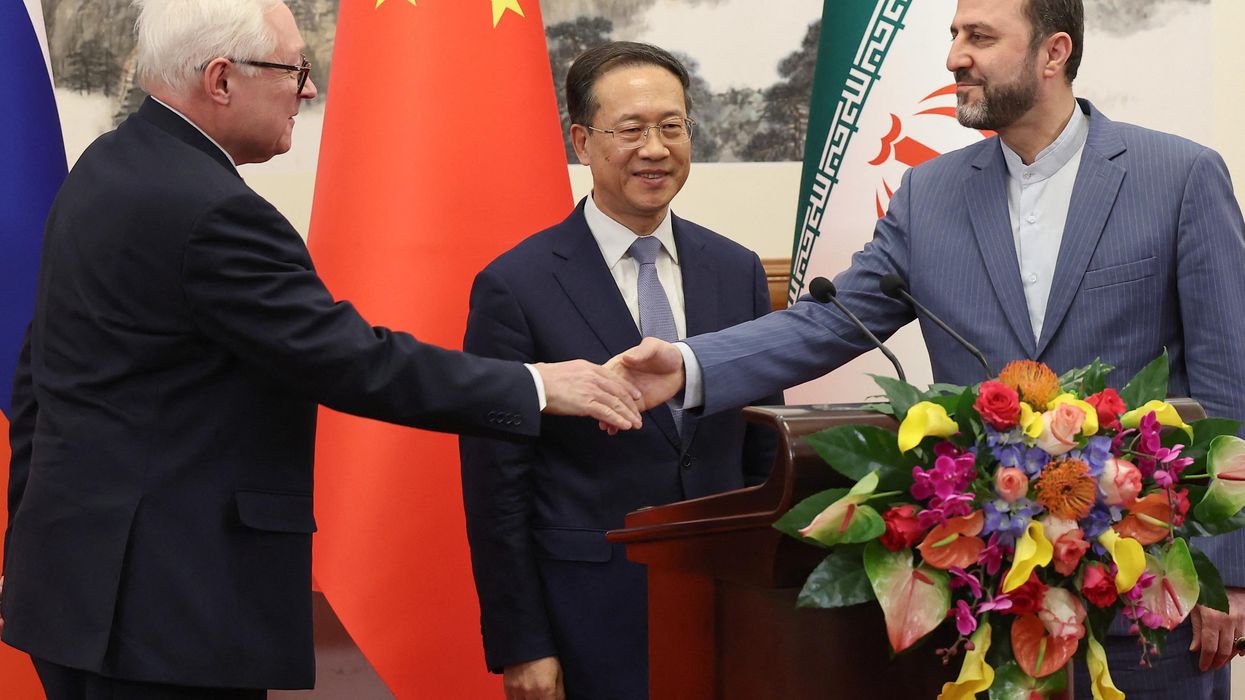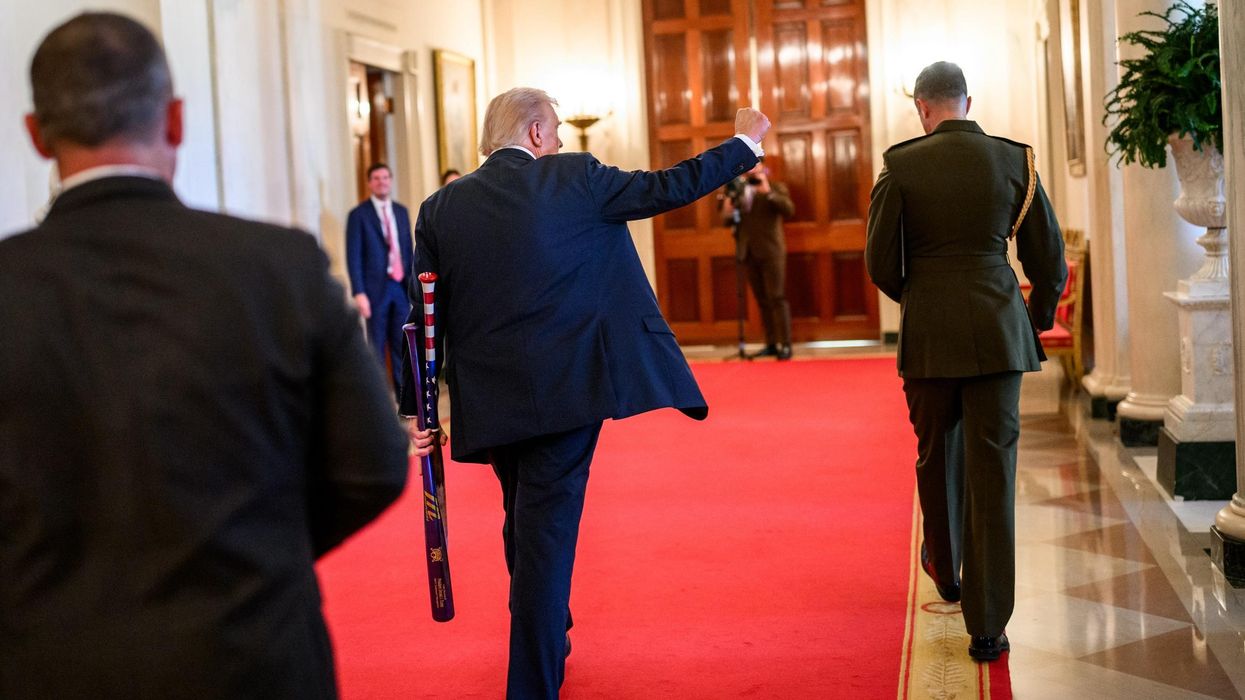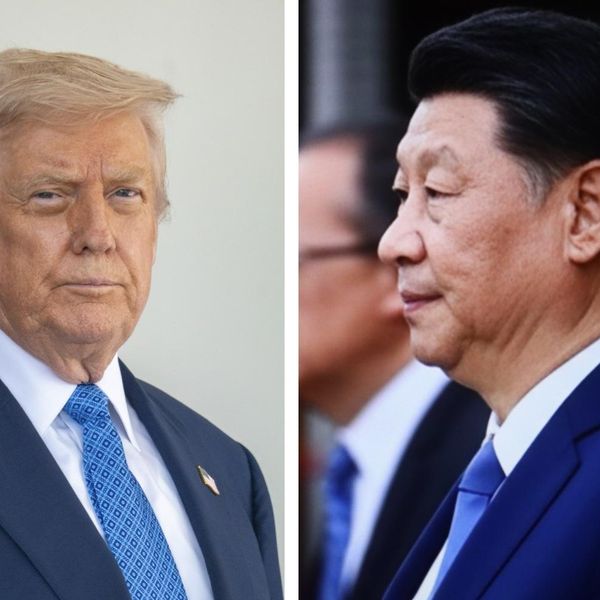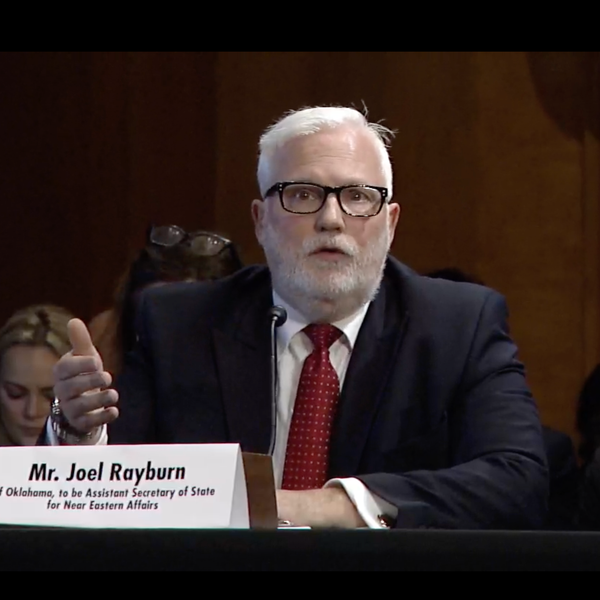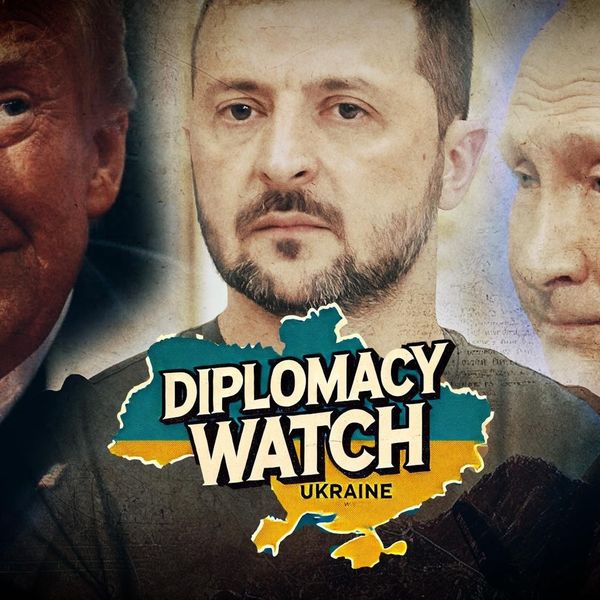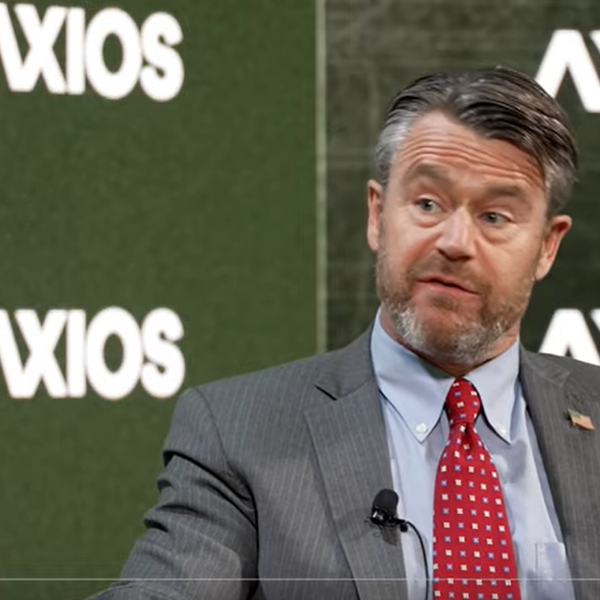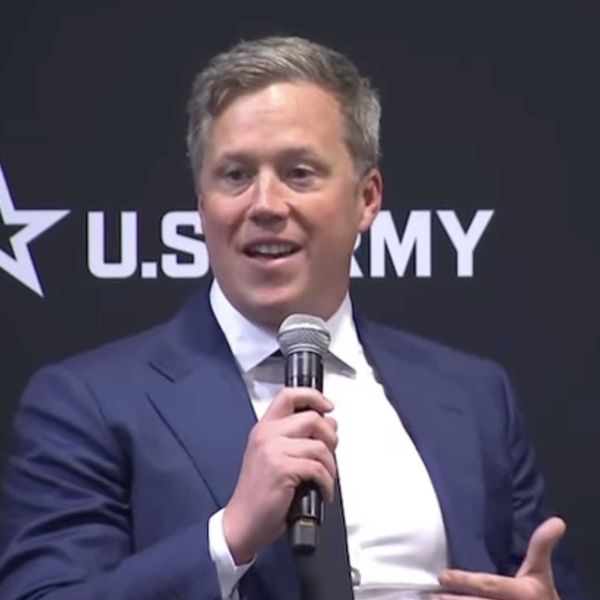While the Biden administration has secured a deal with Israel and Hamas for a combat “pause,” it remains to be seen if this leads to a formal cease fire or only allows for a brief respite before Israel resumes its bid to destroy Hamas.
But what is clear is that Hamas’s October 7 assault has shaken the assumptions of every player in the Middle East including Iran. Tehran’s number one worry is that the assault could invite a regional war for which it was not prepared. Ground zero for such a conflict is the Lebanon-Israel theater. While Hezbollah leader Hassan Nasrallah telegraphed in his November 3 speech that he wants to avoid war with Israel, he also insisted that “when we do receive the order to…take sides with Hamas against the Israelis, you will see the difference.” Thus, he warned, “whoever wants to prevent a regional war, and I am talking to the Americans, must quickly halt the aggression in Gaza.”
If the Biden administration has been listening, so have Iran’s leaders. They may yearn for Israel’s destruction. But the last thing Tehran wants is for the “axis of resistance” that it has forged to be weakened by a regional conflagration that Iran did not seek. The purpose of Iran’s alliances with militant groups in Lebanon, Syria, Iraq and Yemen is not Israel’s elimination but rather the survival of the regime. Thus, Iran will have to find ways to support a pummeled Hamas as it contends with what could eventually be a wider global effort to rebuild Gaza as part of a new diplomatic initiative on the Palestinian-Israeli issue. To resist, while skirting the potential perils of resistance, is a dilemma that Hamas’s “Al-Aksa Storm” has only deepened for Iran, and for Hezbollah.
Deterrence and the paradox of “resistance”
Lacking a powerful conventional military, Iran has deployed a “forward defense” strategy via alliances with armed non-state groups which have one primary mission: to deter the U.S. or Israel from attacking Iran. Beyond subcontracting Iran’s defense to regional actors, this strategy gives Iran plausible deniability even as its allies periodically harass, intimidate or threaten Tehran’s foes. This blurring of the lines between defense and offense carries risks, the most obvious of which is the possibility of spiraling escalation between Iran and its enemies. But a second risk is that Iran’s regional allies might “go rogue” by taking on Israel or the U.S. in ways that could damage the deterrent architecture provided by the axis of resistance. Such a possibility has been ever-present in the Israel-Lebanon theater but has loomed even larger in the Gaza-Israel arena.
For Tehran, Hezbollah’s most important role is to deter an Israeli attack on Iran’s nuclear facilities. Thus, it has provided Hezbollah with some 100,000 rockets, while Iran’s Islamic Revolutionary Guard has helped transform Hezbollah’s army—which includes some 22,000 fighters and an equivalent number of reserves—into a potent fighting force. Even with Israel’s “Iron Dome” anti-missile system, by launching multiple rockets, experts argue that Hamas could hit all of Israel’s main cities and inflict immense damage on refineries, water desalination plants, and industrial infrastructure. But, because Israel is capable of inflicting similar costs on Lebanon, the ultimate obstacle to a full-fledged Hezbollah-Israel war is the real prospect of “Mutually Assured Catastrophe,” or MAC, for both countries. Knowing this, Hezbollah’s role in the axis of resistance is to preserve its deterrent capacity (and that of Iran) by avoiding a full-fledged war with Israel.
As for Hamas, while it has not received the kind of advanced armaments that Iran has given Hezbollah, it has used Iran’s missiles, drones, training and funding to cause pain and draw Israel into costly military incursions -- but without posing an existential threat. Indeed, this situation facilitated Israel’s efforts to divide Gaza from the West Bank. While Gaza’s people have paid a high price for this modus vivendi, the Israel-Hamas stand-off has benifitted Iran. By giving its regional allies the means to harass Israel, Iran has kept the flame of “resistance” burning, but without risking a regional explosion that might prove costly for Hamas and Hezbollah. Iran’s forward defense strategy has depended on walking this tricky path.
October 7: Hamas goes quasi-rogue?
Hamas’ October 7 “Al Aksa Mosque Storm” has complicated Iran’s forward defense strategy in two closely related ways:
First, it underscored the risk that one or more of its allies might go rogue. After all, the attack hinged on an elaborate artifice of deception that not only surprised Israel but was also kept from both Hezbollah and Iran. Thus, Iran and Hezbollah responded to events as they unfolded while their leaders held that they had no forewarning of the attack. U.S. intelligence sources substantiated such claims, while Hezbollah’s decision to move it forces to southern Lebanon following the Hamas attack suggested the improvised nature of its response. When Iranian Foreign Minister Hossein Amir Abdollahian insisted that Hamas “is not receiving orders from us” and is acting in its “own interests,” he was probably not prevaricating. Instead, Abdollahian stated unambiguously that “we don’t want this war to spread out.”
Second, Hamas’s massacre of 1200 Israeli and foreign nationals and its seizure of at least 240 hostages has galvanized many Israelis behind a “war of destiny” the likes of which the Islamist organization has never witnessed. This, of course, may be exactly what Hamas envisioned. Indeed, at the very most, some of its forces were prepared to move towards the West Bank in the hope that Palestinians in the occupied West Bank and East Jerusalem — and in Israel — would rebel en masse. At the very least, Hamas’s leaders hoped that their attack would shake up the entire region, even if this meant absorbing a terrible military blow and sacrificing thousands of civilian lives. But the prospect of a wider war that could burn its own regional assets was not something that Iran or Hezbollah sought.
Dilemmas for Iran and Hezbollah
The potential for a wider war has created a dilemma for Iran and Hezbollah. Neither can afford to let up on the pressure along the Lebanese border and in other arenas such as Syria, lest they be seen as failing to support Hamas. But, as the pace of deadly tit-for-tat attacks has escalated, the danger for Israel and Lebanon has increased. Quite apart from the lethal prospect of MAC is the possibility that Israel could refocus its military might on Lebanon and thus deliver a severe blow to Hezbollah. But if, as one expert has noted, it is unlikely that “Iranians want to sacrifice Hezbollah on the altar of Hamas,” Tehran cannot risk signaling that it is ready to sacrifice Hamas on the altar of the axis of resistance. Iran’s leaders face a conundrum for which there is no simple solution.
Still, given their long-term interests, Iran’s leaders must find a way forward that ensures that their regional allies can survive and project deterrence. For this purpose, they are resorting to their familiar carrot-and-stick approach. The stick is being wielded by Tehran’s allies in Yemen and especially Iraq. Apart from demonstrating solidarity with Palestinians, the recent missile attacks on U.S. forces in Syria are meant to send the signal that U.S. forces will suffer a cost if Washington doesn’t push for a formal cease-fire. The U.S. has retaliated after each assault in the hope that it can deter Iran’s allies from escalating, but the potential for a widening confrontation between U.S. and pro-Iranian forces could increase dramatically if Israel resumes its assault in Gaza. As for the carrot, based on his early November talks with Qatar and Hamas, Foreign Minister Amir-Abdollahian set out the outlines of a deal, including a prisoner exchange between Hamas and Israel, an immediate halt to attacks, and the provision of humanitarian aid to Gaza. But, he added, “It is the American side that must decide whether it wants to escalate the war.”
This, of course, was the very question that the Biden White House had to address. Now that it has backed a truce, the White House might welcome an international efforts to press for a wider cease-fire. Not surprisingly, Prime Minister Benjamin Netanyahu has insisted that military operations will continue. But with the recent release of hostages, the pressure in Israel and abroad to expand the truce will increase, thus lessening the chances of a U.S.-Iran military confrontation that Washington and Tehran both want to avoid.
Iran wants no war and no peace
Whatever the outcome of the Gaza conflict, two things are clear. First, Iran’s leaders must rethink how to ensure that its allies do not use the umbrella of “deterrence” to pursue goals that could harm the axis of resistance. This will not be easy because the foot soldiers of Hamas and Hezbollah have long expected that the ultimate purpose of resistance is to crush Israel rather than to protect Iran’s rulers. As one Hezbollah fighter put it, my “main fear is to die without liberating Palestine – but we can see it getting closer.” Such hopes will be delt a further blow if a diplomatic process –backed by Iran-- opens up.
Second, while the Gaza war has exposed the failures of the Biden administration’s Middle East policy, the international community might still look to Washington to build on the November 24 truce in the hope that it can provide the basis for a wider effort to rebuild Gaza and, as Biden himself has proposed, to refocus U.S. policy on the issue of Palestinian statehood. In fact, the White House might try to recast the “Abraham Accords” in a manner designed to tackle, rather than circumvent, the Palestinian issue. Such an effort could have the support of European states and the blessings of Saudi Arabia and other Gulf states, including Qatar, which has emerged as a vital Gulf Arab ally of the United States.
With U.S. elections looming on the horizon and a Middle East seizing with anger over Israel’s devastation of Gaza, the window of opportunity for such an initiative will be very short. It is possible that Iran might activate the axis of resistance to sabotage any wider diplomatic process, especially if, as is likely, it excludes Hamas. But any bid by Iran to act as a spoiler could also again expose the fault lines in the axis of resistance. Indeed, having pushed for a cease-fire, Tehran must tread carefully. After all, Russia and especially China — which are effectively associate members of the axis of resistance — will probably back rather than undercut a broader diplomatic process.
Such a possibility has prompted a debate in Iran regarding the costs and benefits of working with Russia and China, particularly given Beijing’s role in securing a renewal of Saudi-Iranian relations earlier this year. One analyst has argued that “we operate within the framework of China and Russia’s interests, without little to gain for ourselves.” However exaggerated, this warning speaks to the contending interests that are at play in a widening axis of states and non-state groups, some of which will not automatically toe Tehran’s line of no peace and no war.
This article has been abridged from a previous version published by the Arab Center Washington DC.
- Are we seeing a push for a US war with Iran? ›
- Iran’s political factions aren't united on Hamas, or the Middle East ›
- Is Hezbollah ready to deal with Israel? | Responsible Statecraft ›
